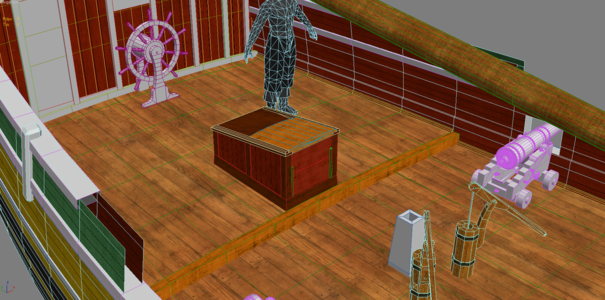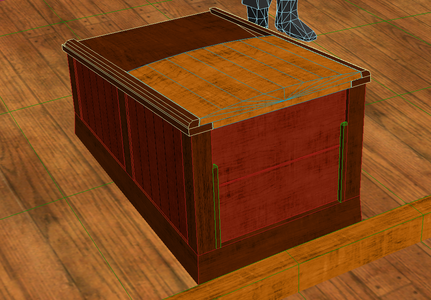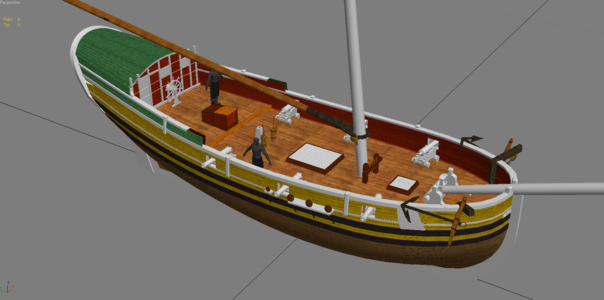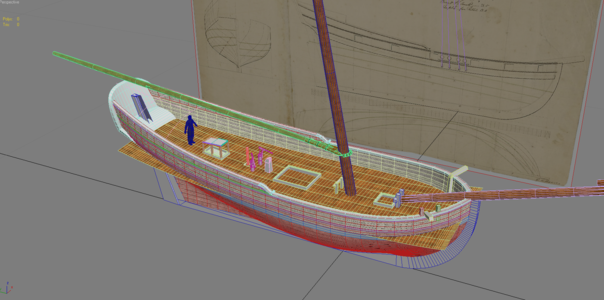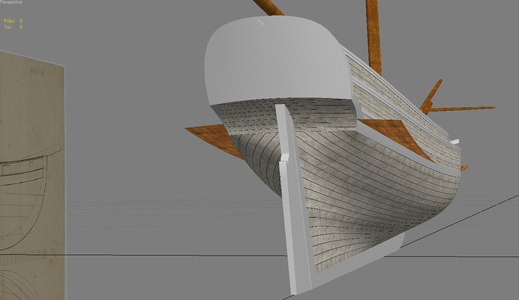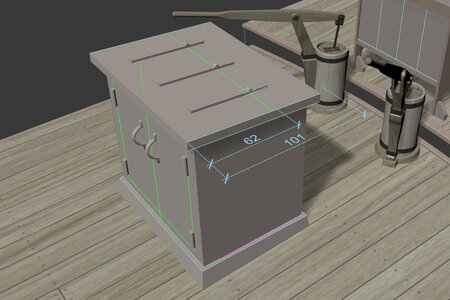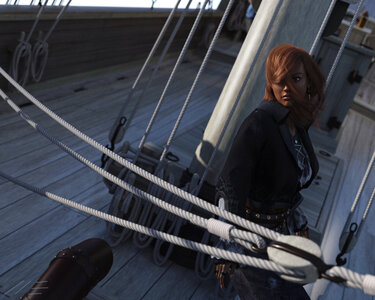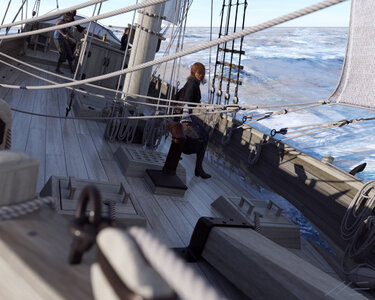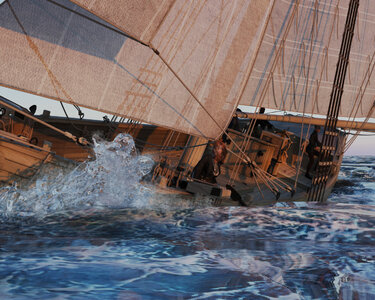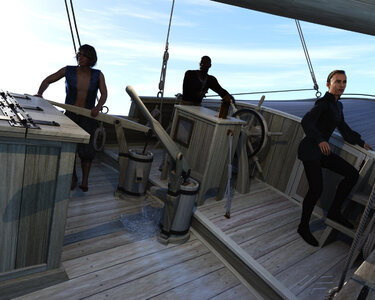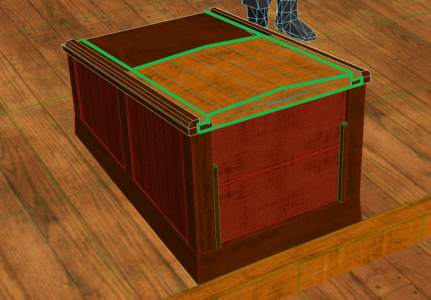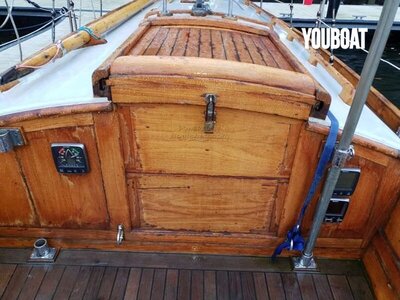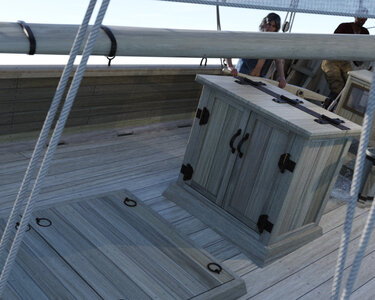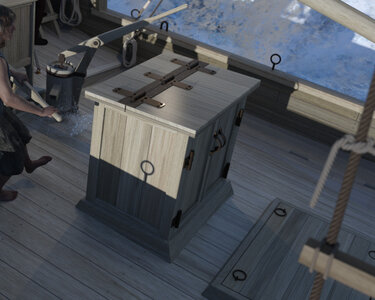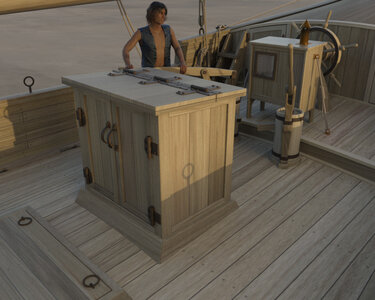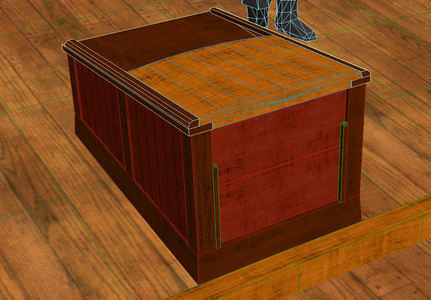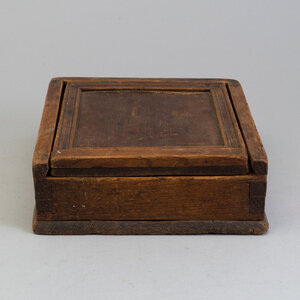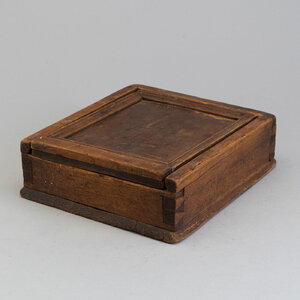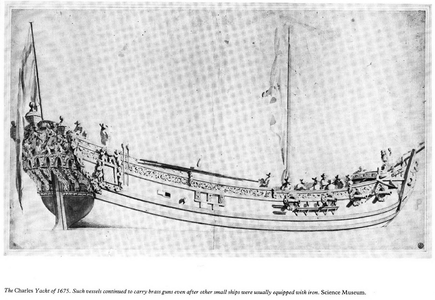Hi,
Good references are some of the Cutters in the National Maritime Museum Collection (Hornet 1763) shows this style of companion lid, others could be a sliding type which would omit the need for ironwork. If you go to the NMM website type in search Cutter 1763 plans and you should get some good results.
This particular vessel the Virginia Sloop is actually based on a French "Cutter" of 49 French feet - so the deck is all conjecture, the original would likely be open decked throughout as some larger French privateers are open decked (Epreuve, Chevert and Escorte being prime examples). The hancings on the original plan show the same style as French vessels.
Back to the companion and deck layout in general: You could in theory split the lid in half and fit appropriate hinges so when open it would rest on the other half, this would allow light and air in while the surrounding structure would keep out any water on deck. No vessel was truly watertight and ingress was always expected.
I imported the original drawing into AutoCad a while ago after buying the Chapelle version of the Virginia Sloop plan, I came to the conclusion that I would enlarge the sloop from its original size to create the Armed Virginia Sloop.
Attached is my interpretation of the companion on a Rhode Island Sloop 1725, its currently WIP and as you can see I am not a professional modeller (I do this in my spare time). My decision was based on trying to minimise iron work, so the lid is made to slide with wash boards simply slotted into the doorway. There is more detail work I need to finish and adjustments needed (such as the plank texture needing to be horizontal for example).
Also attached is my take on the Bermuda Sloop ca1740, I have seen this sloop built with a round tuck stern but the wales are always adjusted to fair into the transom (Rob Napiers version shows this and a few others). My interpretation was originally a square tuck but then altered it to the round tuck seen in the pictures. The wales are still as shown on the NMM drawing (and Chapmans plate) and I believe the shape has came out quite well.
Again with this the deck layout is open to interpretation and speculation: so my take on it is three hatches, a fore hatch, main hatch and aft (companion currently under construction) as too many openings would weaken the deck from the sea. I have positioned the cabin stove (cylinder is a reference) aft of the pump well to heat the cabins and forward of the pump well I have placed the galley stove (wooden type stack with repositionable cowl). The galley would also heat the cabins that run either side of the main hold to the bow. If you look at the Cutters plans I mentioned you will see why I went this direction.
With the chimney stacks around the pumps there is space over the main hatch for a possible 12ft boat. The bitts near the mast are just references as the Mediator 1745 shows these forward of the mast.
The hinges on the door of the companion could be HL hinges or Cockshead Hinges, while the lid hinges could be gunport lid hinges.
Regards,
James
